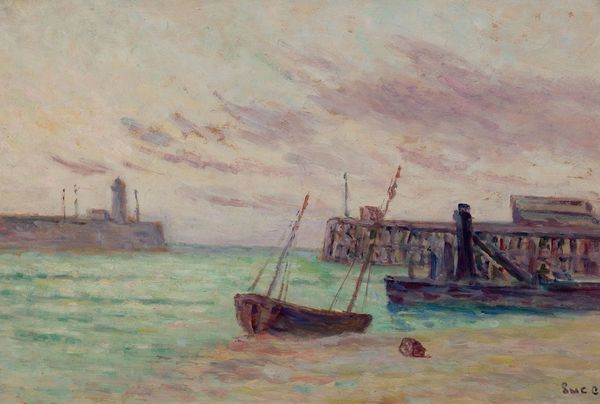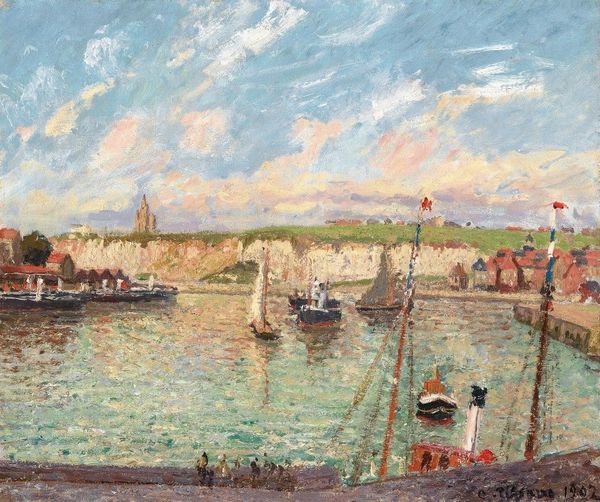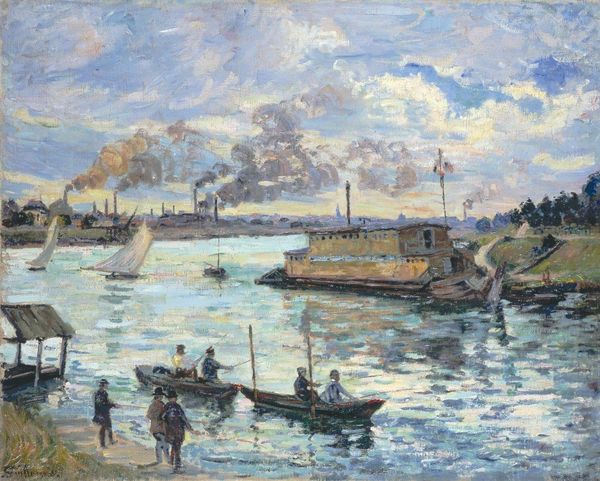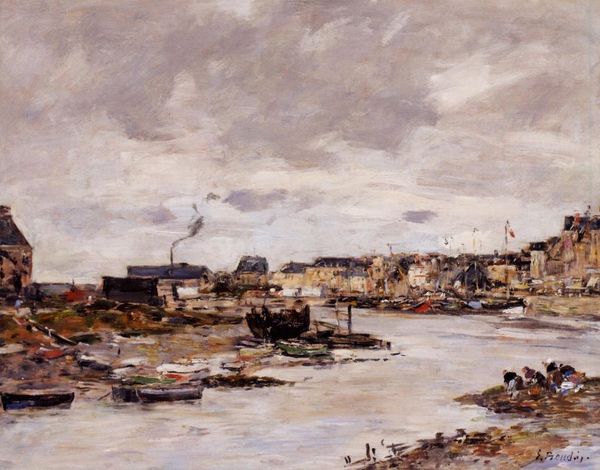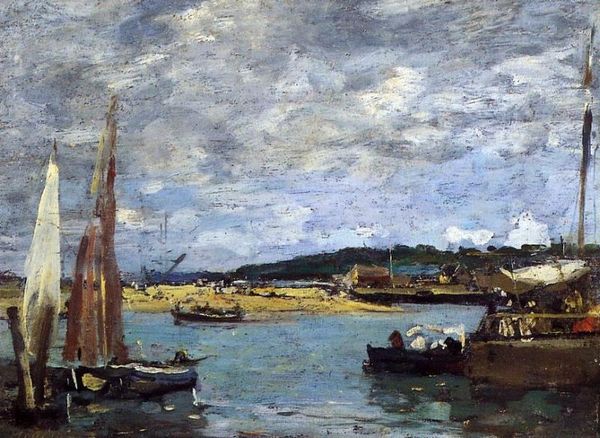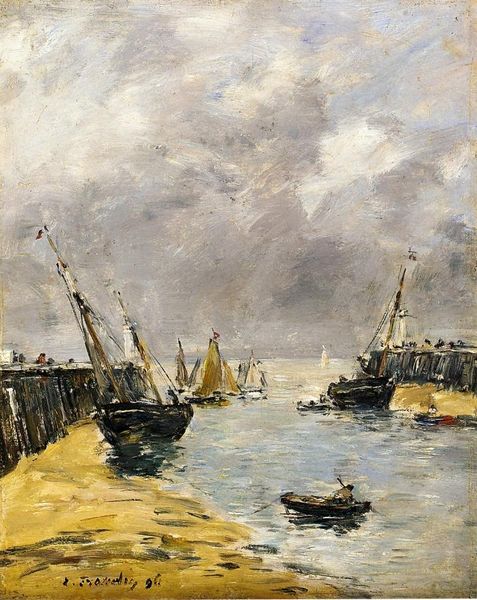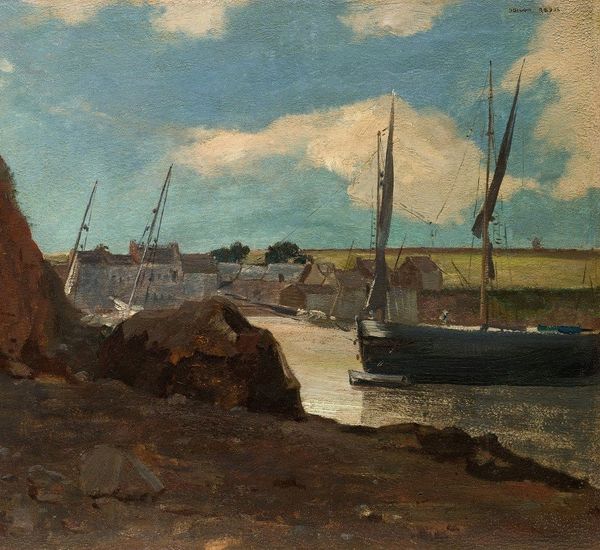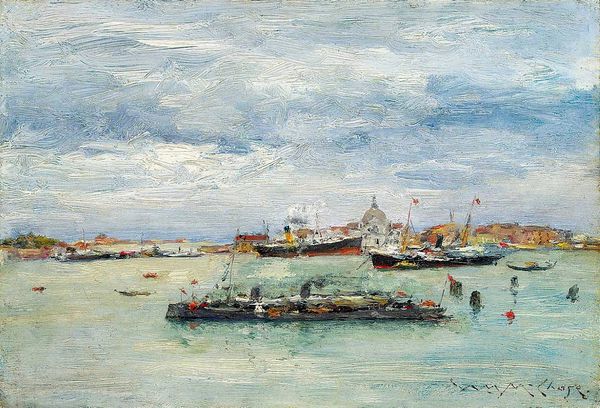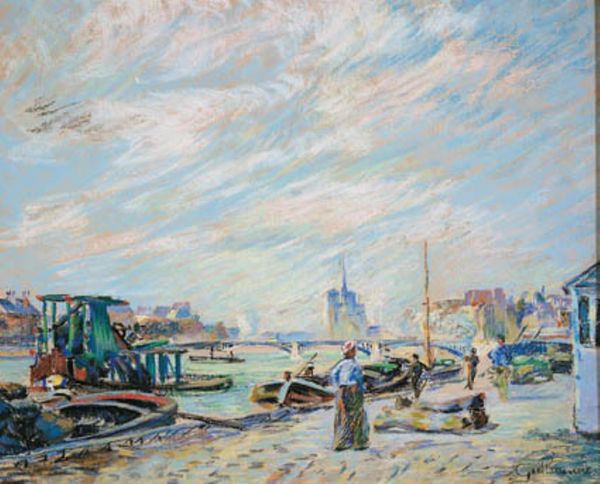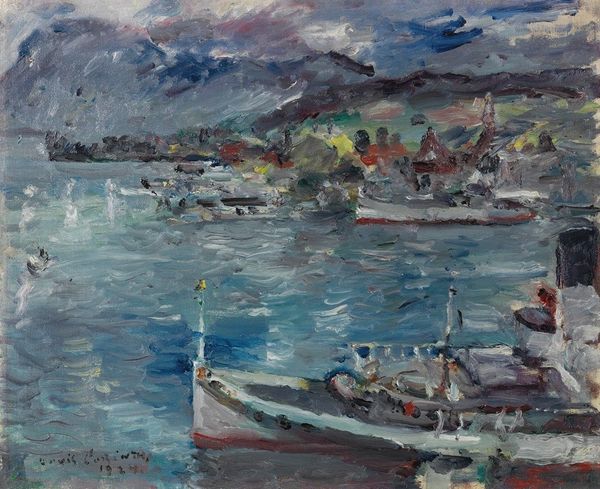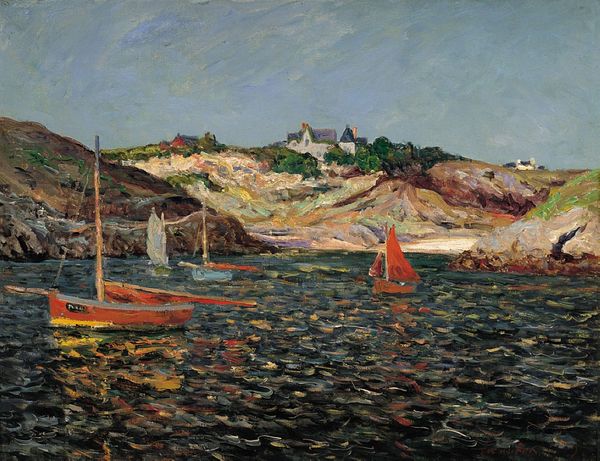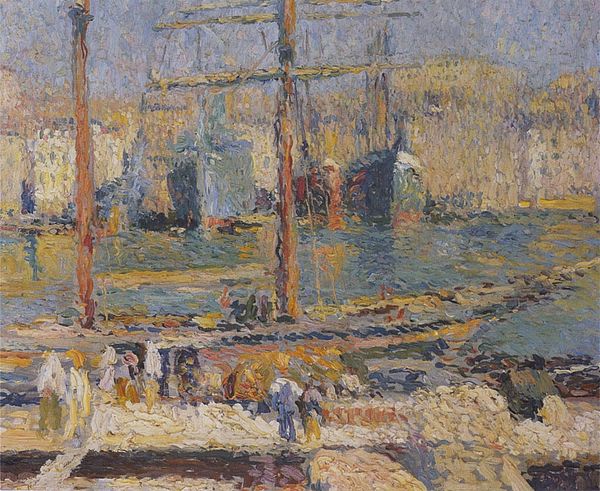
Copyright: Public Domain: Artvee
Curator: Pissarro's "Darse De Pêche Et Bassin Duquesne, Dieppe, Temps Gris Lumineux" from 1902. It's an oil painting depicting the port of Dieppe in France. What strikes you most about it? Editor: Well, the colors are very muted, yet the painting feels…alive somehow? The brushstrokes create a sense of movement, particularly in the sky and water. What do you see in this piece? Curator: For me, this painting isn't just about a harbor; it’s a visual representation of the complex relationship between industrialization and the natural world at the turn of the century. Notice how the smoking chimneys of the factories rise above the town and compete with the sky; they are looming large. Editor: Yes, I see what you mean. It’s a bit unsettling when you consider the implications. Curator: Absolutely. Pissarro wasn't merely capturing a scene; he was engaging with a crucial societal shift, presenting both the beauty and the cost. What is Dieppe's reliance on industry extracting from the environment? Editor: That gives the painting a whole new layer of meaning. I initially saw it as a peaceful, if somewhat subdued, landscape, but now I realize it's a statement on environmental impact. Thank you, this changes how I will think about landscape art from now on! Curator: It’s a dialogue, isn’t it? Art, environment, and our place within that framework. Looking through the lens of history and environmental concerns helps to contextualize the importance of Pissarro’s landscapes and makes one consider who truly pays the cost of modernity. Editor: I agree, and I think bringing this critical eye to Impressionism, which can often seem purely aesthetic, is so important.
Comments
No comments
Be the first to comment and join the conversation on the ultimate creative platform.

